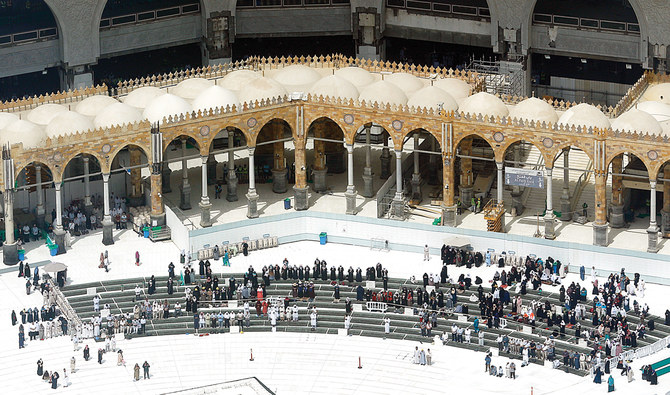JEDDAH: Saudi Arabia on Wednesday suspended all Umrah pilgrimages as it reported its second case of the new coronavirus.
The Kingdom imposed a ban last week on overseas pilgrims visiting the Grand Mosque in Makkah and the Prophet’s Mosque in Madinah.
The ban now applies to Saudi nationals and expatriates, the Interior Mini stry said.
The aim is to “limit the spread of the coronavirus and prevent its access to the Two Holy Mosques, which are witnessing permanent and intense crowds, which makes the issue of securing these crowds of utmost importance,” a spokesman said.
Saudis and expats may still visit Makkah and Madinah to pray provided they do not go for Umrah, said Deputy Hajj Minister Abdulfattah Mashat. “Makkah is still open to visitors from across the Kingdom, the decision suspends only Umrah activities,” he told Al Arabiya TV.
Saudi Arabia reported its second coronavirus case on Wednesday, a companion of the first, who crossed the causeway from Bahrain without disclosing that he had visited Iran, the center of the outbreak in the region. Authorities quarantined 70 people who had been in contact with the patient and 51 of them tested negative for the virus, the Ministry of Health said.
There are now more than 3,150 cases across the Middle East, almost all either in or linked to Iran, which has 2,922 confirmed cases and 92 deaths. Authorities canceled Friday prayers in all provincial capitals and banned overseas trips for officials.
Nevertheless, experts continue to worry that Iran is not being transparent about how badly it has been hit.
“The spread of the virus to almost all of Iran’s provinces leaves little doubt that the authorities are struggling to contain the outbreak,” said Torbjorn Soltvedt, an analyst at the risk consultancy Verisk Maplecroft.
“After a slow and politicized response to the outbreak, the government now faces a race against time to prevent a public health emergency from turning into an economic crisis.”
Worldwide, more than 94,000 people have contracted the virus, with more than 3,200 deaths. “People are afraid and uncertain. Fear is a natural human response to any threat,” said Tedros Adhanom Ghebreyesus, head of the World Health Organization. “But as we get more data, we are understanding this virus and the disease it causes.”
Insurers in Saudi Arabia reassured clients that they were covered if they contracted COVID-19, the disease caused by the coronavirus. The illness is a respiratory condition and all health policies cover tests and treatment, including medical examination, diagnosis and medicines, said Yasser Al-Marek, spokesman for the Council of Cooperative Health Insurance.
Nearly a third of employers in the Kingdom have plans for staff to work from home if the virus threat grows, a new survey suggests. However, most “work from home” plans are restricted to HR and admin staff, according to the survey by the employment portal GulfTalent.






































